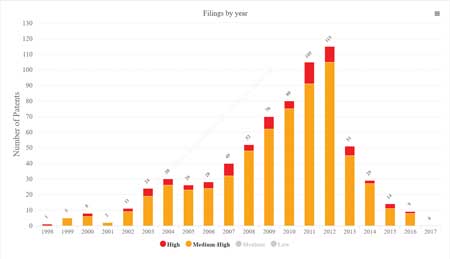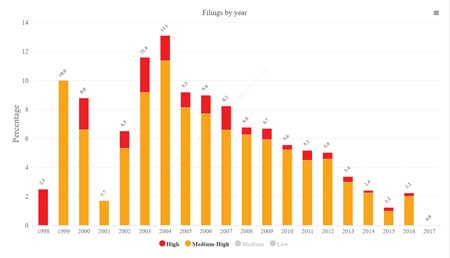 The supply chain in wind energy is feeling a profit margin squeeze from the global shift towards auctions/tenders. As a consequence, it is constantly seeking ways to cut costs and remain competitive. However, one key way in which many OEMs and component suppliers are missing the opportunity to save on capex costs is to leverage royalty free technology.
The supply chain in wind energy is feeling a profit margin squeeze from the global shift towards auctions/tenders. As a consequence, it is constantly seeking ways to cut costs and remain competitive. However, one key way in which many OEMs and component suppliers are missing the opportunity to save on capex costs is to leverage royalty free technology.By Philip Totaro, Founder & CEO, IntelStor
Leveraging royalty free technology can help improve the levelised cost of energy (LCOE) for some OEMs since they are now able to offer more competitive products, having been previously blocked from including the technology due to the exclusivity of the intellectual property (IP) rights held by a competitor. Those who may have licensed (or were compelled to license) a competitor’s patented technology are often at a commercial disadvantage due to an inability to reduce price below a certain level for fear of negative margins on a wind farm project due to the mandatory royalty payments for each unit sold (regardless of price).
However, when a patent expires, it opens up the opportunity for other companies to use that exact same technology embodied in the patent on a royalty free basis. In the wind energy industry, 2018 is a year of particular importance because of the innovations which were developed and the patents which were filed in 1998 that have now reached the end of their term.
 Variable speed control, individual blade pitch, and blade pre-bend patents have all expired, and the royalty free use of these technologies could represent an LCOE advantage of 3–4% versus the same product without these previously proprietary technologies:
Variable speed control, individual blade pitch, and blade pre-bend patents have all expired, and the royalty free use of these technologies could represent an LCOE advantage of 3–4% versus the same product without these previously proprietary technologies:- The variable speed system from GE Renewable Energy comprises a wound rotor induction generator, a torque controller and a proportional, integral derivative (PID) pitch controller. The torque controller controls generator torque using field oriented control, and the PID controller performs pitch regulation based on generator rotor speed.
- Another recently expired patent relates to a wind power installation comprising a rotor having at least one rotor blade for converting the kinetic energy of the wind into mechanical energy, an adjusting device for individually adjusting at least one rotor blade, a generator for converting the mechanical energy of the rotor into electrical energy, and an operative connection between the rotor and the generator for transmitting the mechanical energy of the rotor to the generator.
- In a patent involving a windmill rotor of the front-runner type and airfoil type wind blades in which the blade tips have a longitudinally forward curved configuration, the curvature solves the problem of inward flexure of the blade in strong wind conditions, without requiring modification of the manner in which the rotor as a whole is mounted in order to avoid having the blade strike the windmill tower under such strong wind conditions.
While the years following 1998 saw an upturn in the number of high value patents in the wind energy sector, since 2012 there has been a precipitous drop in high value IP creation. Companies cut their R&D and innovation budgets in 2013 due to the global market downturn and have been disincentivised from developing high value IP ever since.
Introducing new technology means going through a process to achieve bankability. That fact, coupled with the economies of scale which can be achieved with existing, proven, bankable technology, has lured companies towards developing incremental innovations rather than game changing and potentially LCOE reducing capabilities.
Companies who desire to be globally competitive must take advantage of high value competitor IP that can be used royalty free. Additionally, they must invest in a pipeline of game changing innovations in order to improve their own products as well as retain negotiating leverage in case a competitor ever comes calling for a new compulsory licence in a seminal technology which has been patented.








